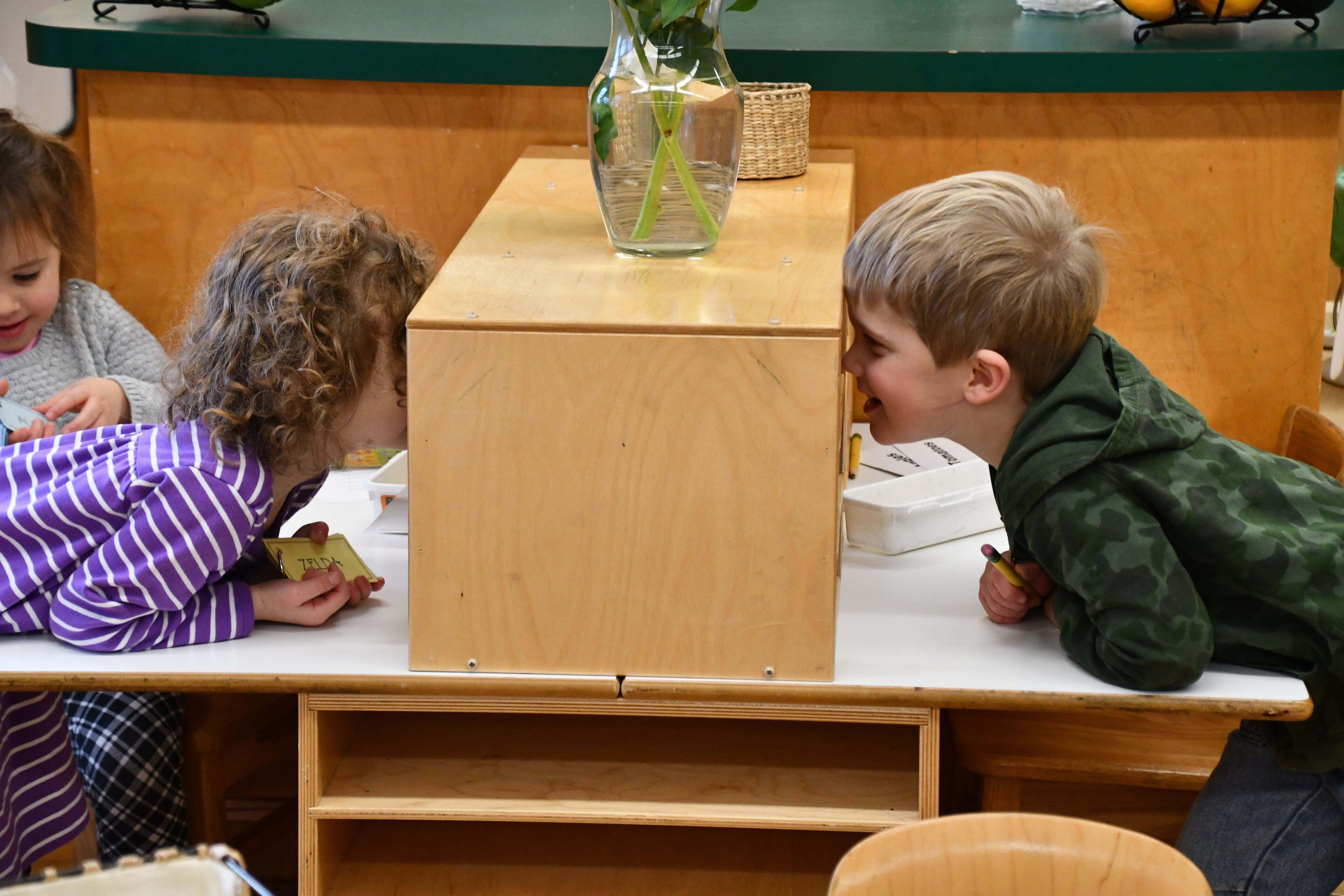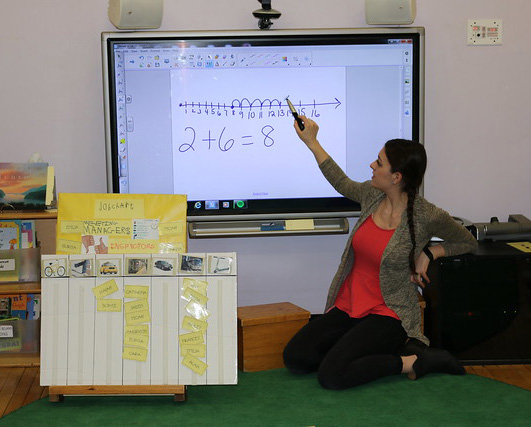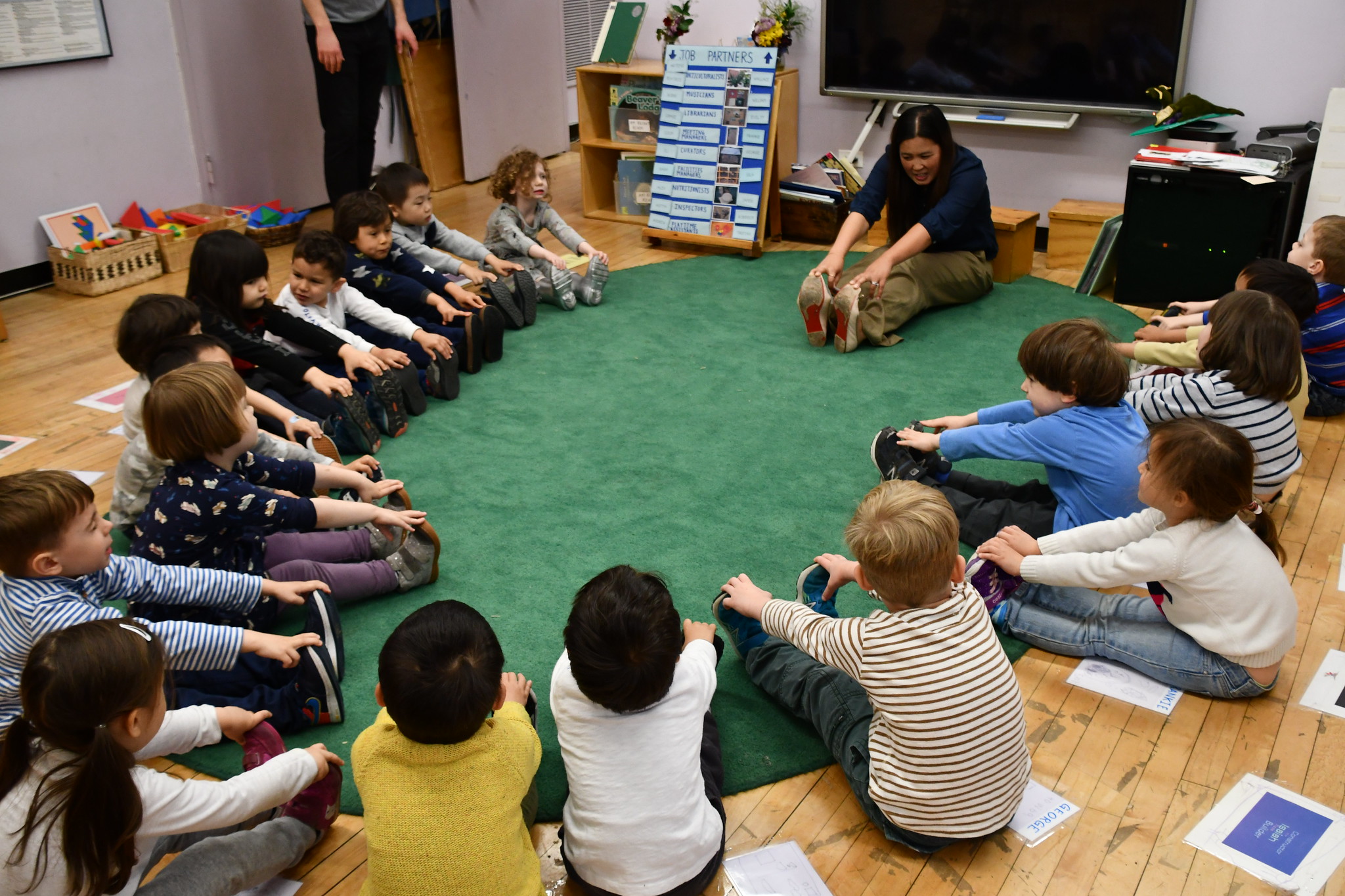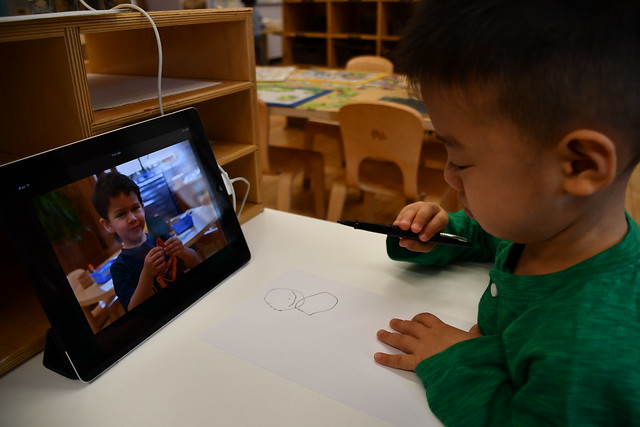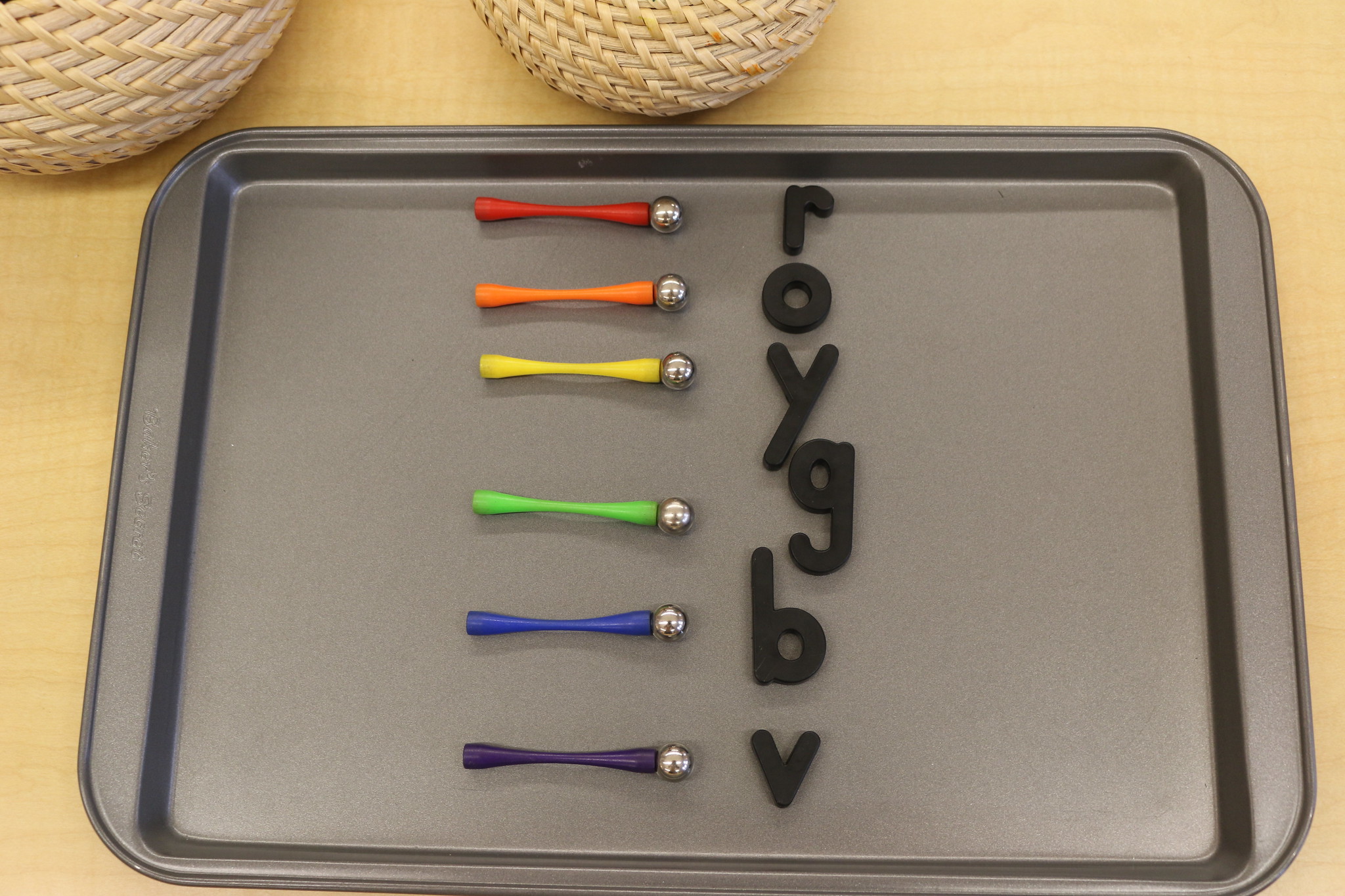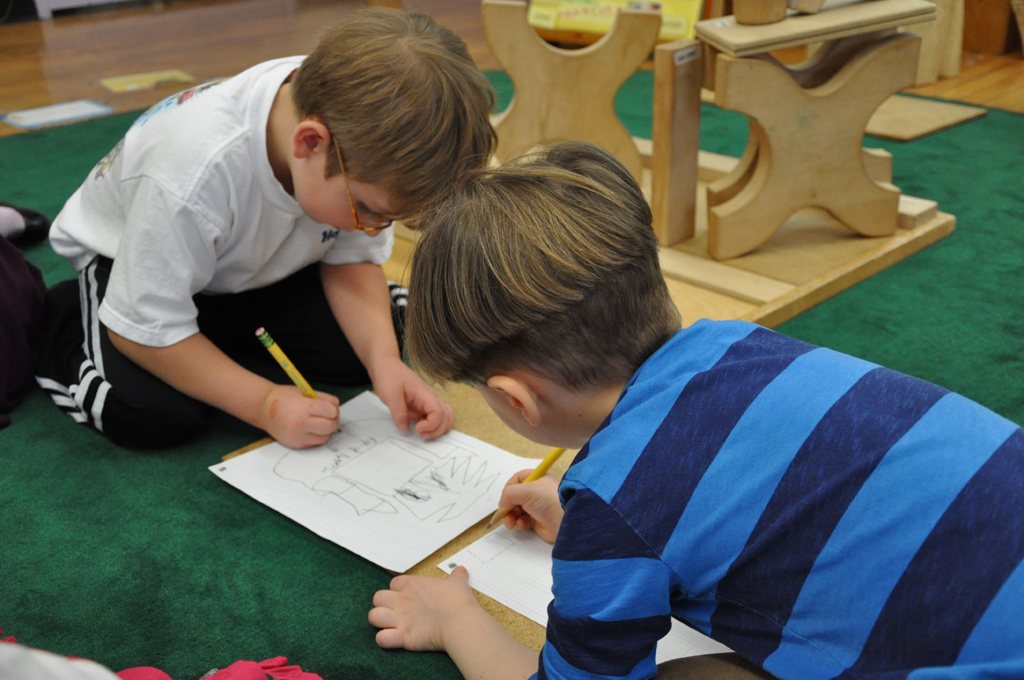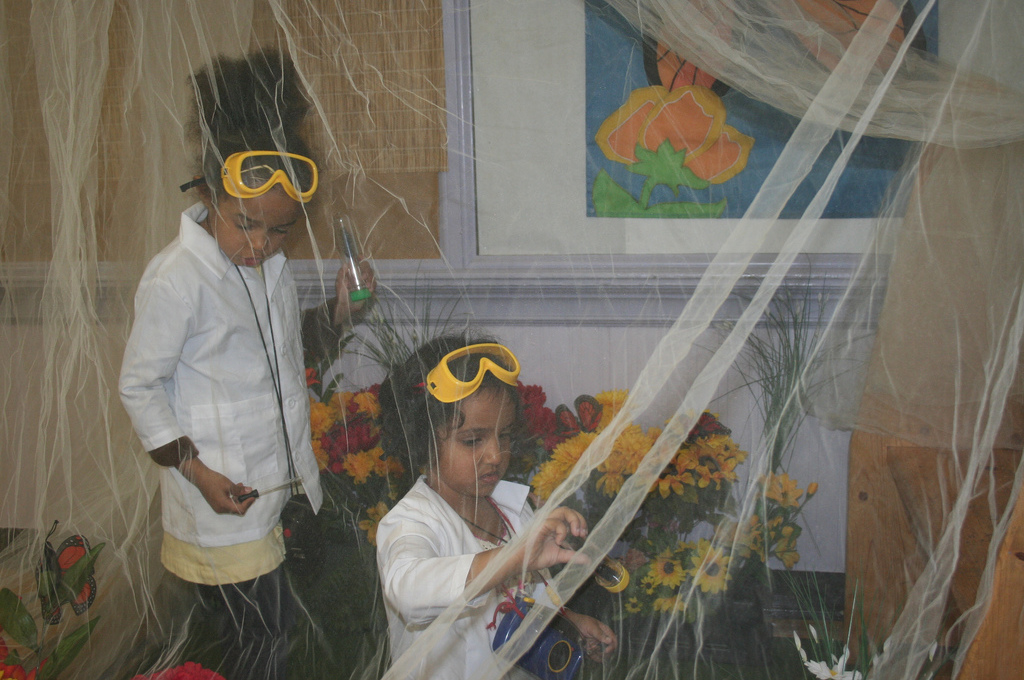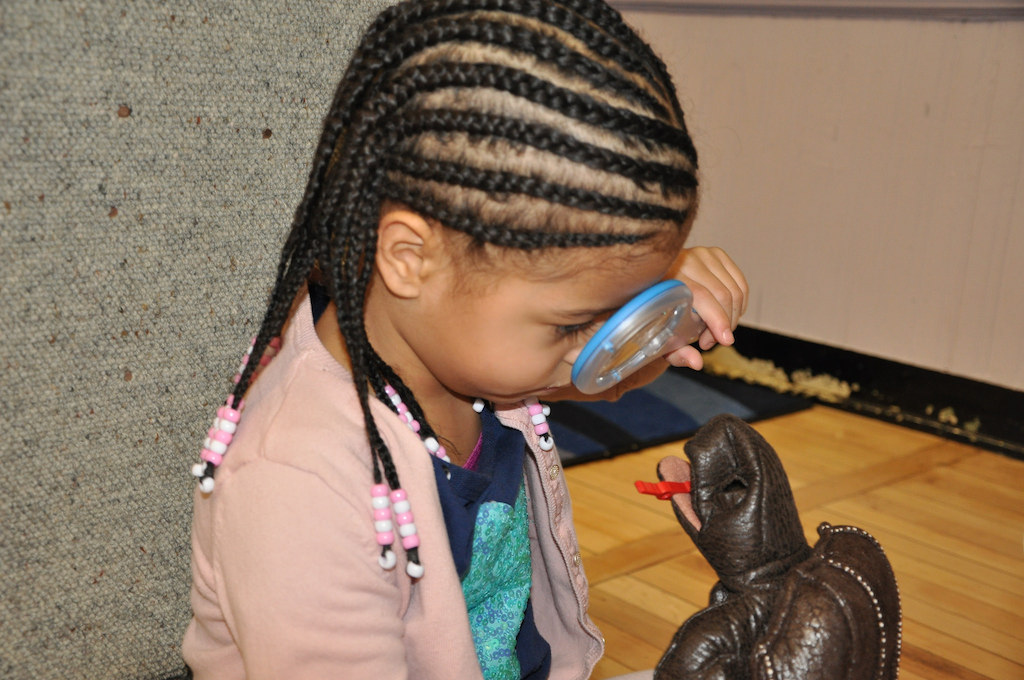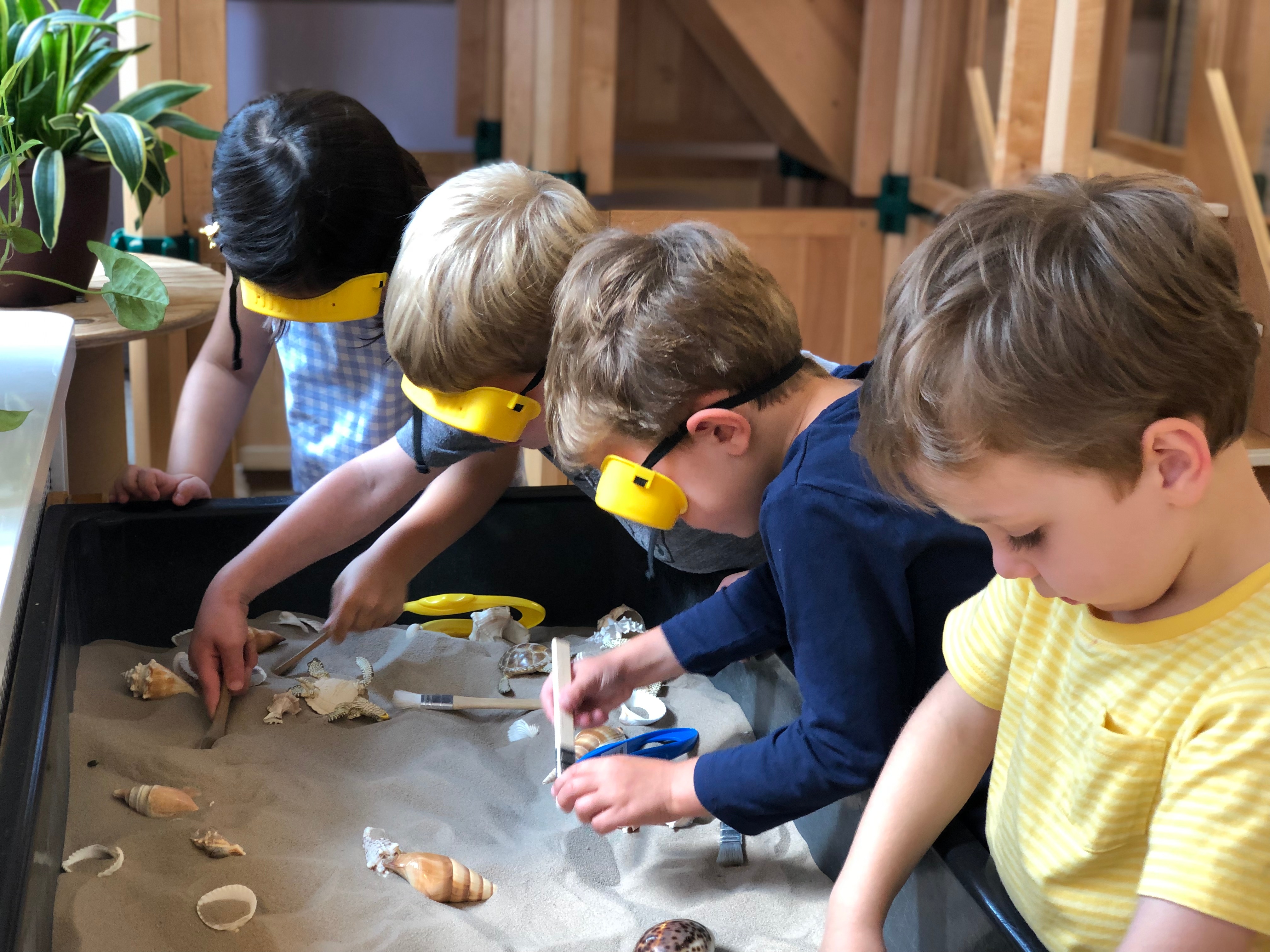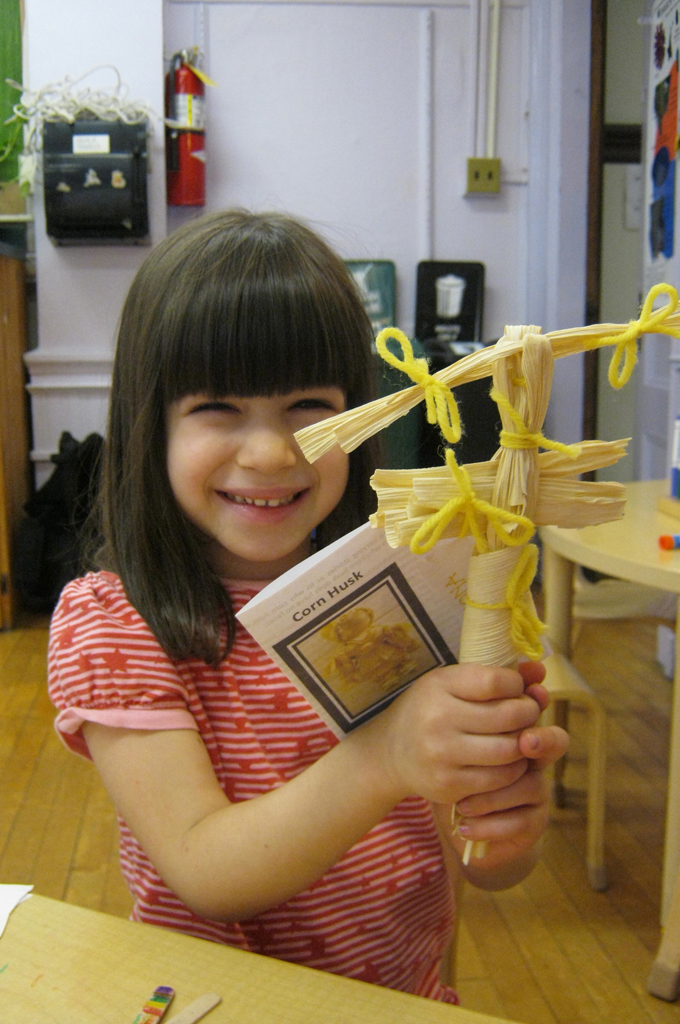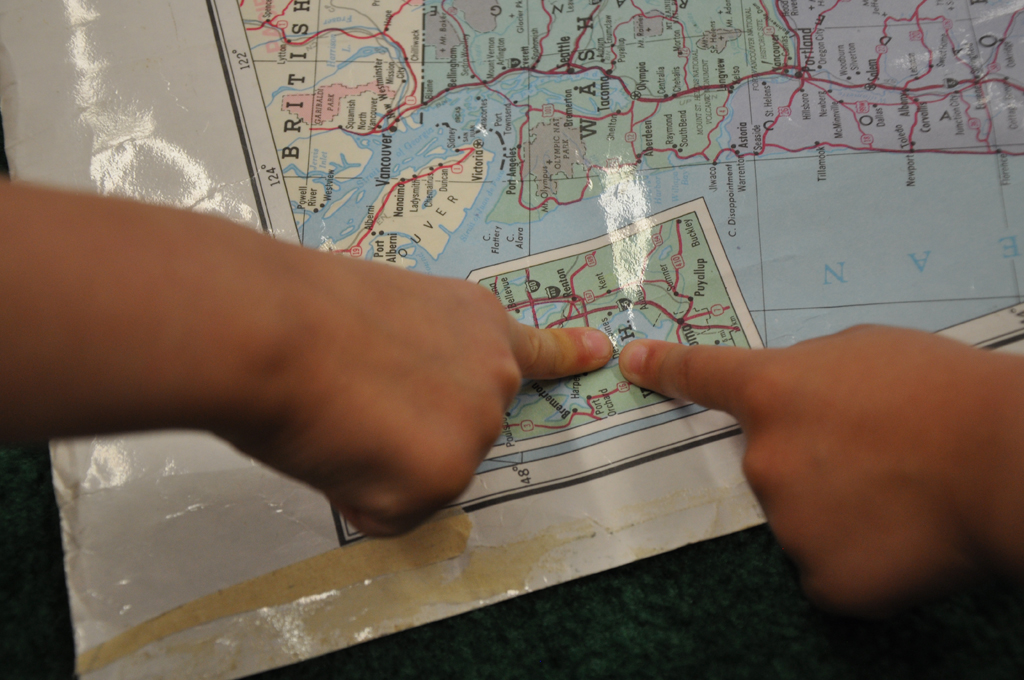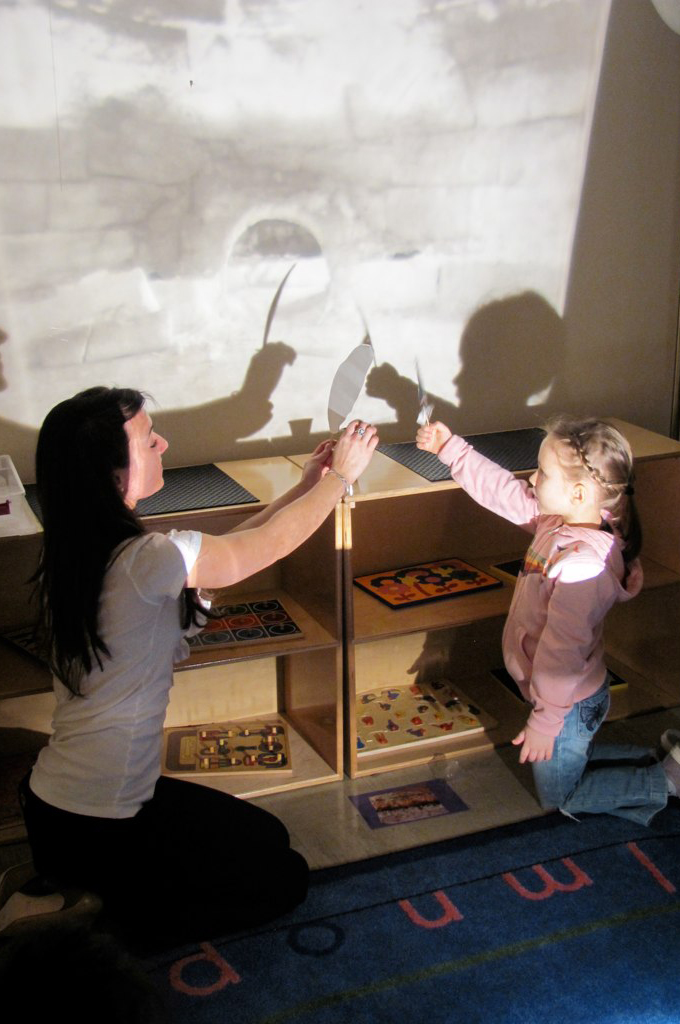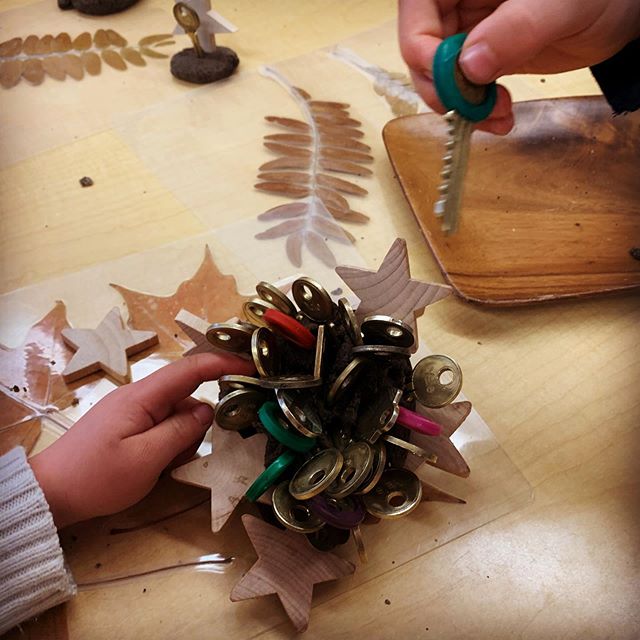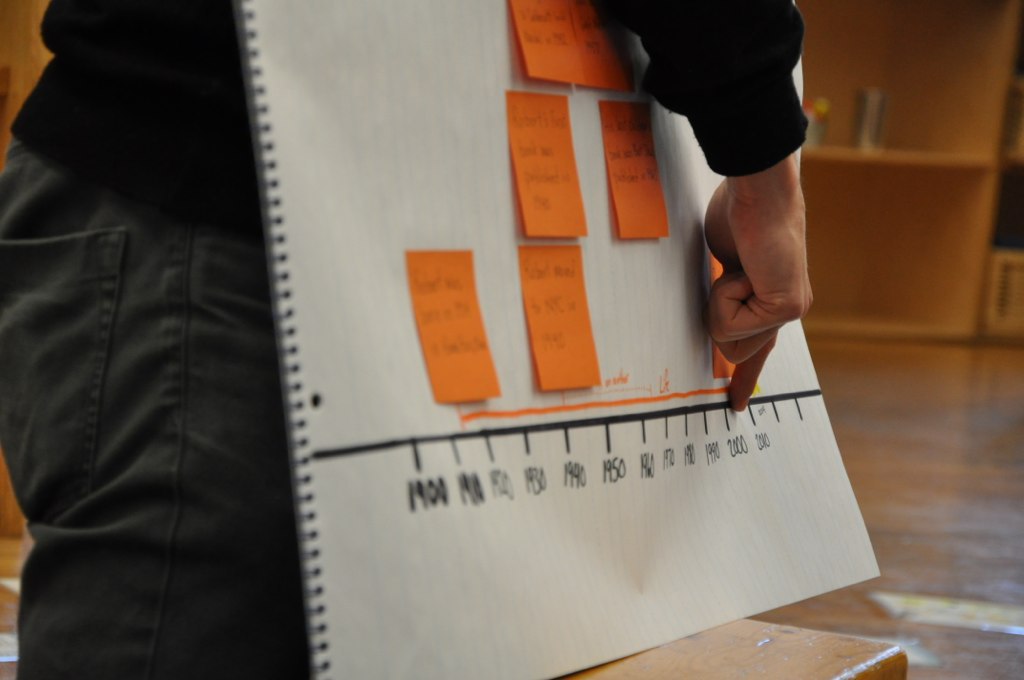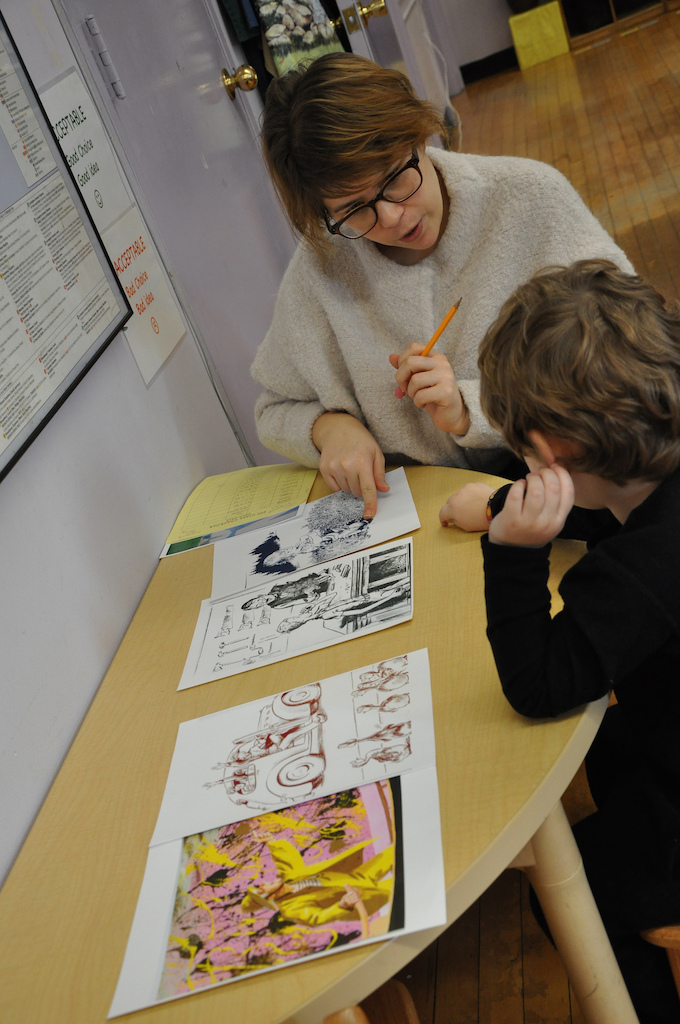
An essential aspect of our child-responsive curricular approach is placing deep value on the children as creators and contributors to the fabric of our studies.
At Hollingworth Preschool we approach learning through an interdisciplinary lens, seeking to foster and support students' connections with the world. From their earliest days in the classroom, the children are actively involved in creating the questions that deeply influence our units of study. The teachers use reflective listening to support children's interests and explorations.
Inspired by John Dewey, we respect each child’s ability to effectively explore and define the world through experience. Through acknowledging, encouraging and scaffolding students’ spontaneous connections between their lives, the world and other texts, the paths of our studies seek to foster students’ fruitful explorations into inquiry based learning.
As a community of learners, we value different points of view, divergent thinking, ambiguity and enthusiasm for discovery. Our studies always end with wonderful unanswered questions, as we recognize that educational pursuits are lifelong endeavors.
Essential aspects of our curriculum include:
Topics of Study
We enact our curriculum through several study topics throughout the school year.
Our leadership team designs a scope and sequence for each school year, selecting engaging topics that provide opportunities for deep inquiry and multiple avenues of exploration. The same study topic explored by two classes may share similar foundations but will be shaped by each group of children's communal interests and inquiries. No two studies are alike as they are in response to the children–their experiences, knowledge, wonderings, and their passions.
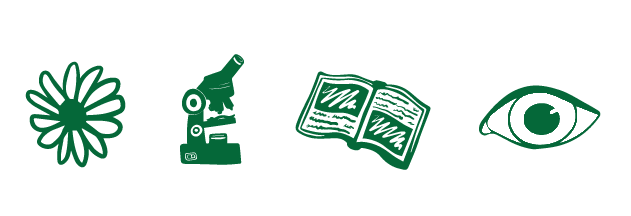
Our studies are interdisciplinary in nature and design, and they always begin with wonderings. What do we know about this topic? What do we wonder about it? The questions that inspire our explorations often begin within one of four foundational lenses. However, as our collective inquiry grows, our studies intentionally evolve and expand to include many disciplinary approaches, demonstrating the interconnected nature of learning.
Click on the buttons below to learn about our foundational lenses, and see
some of the topics and questions we’ve explored in the past.
some of the topics and questions we’ve explored in the past.
